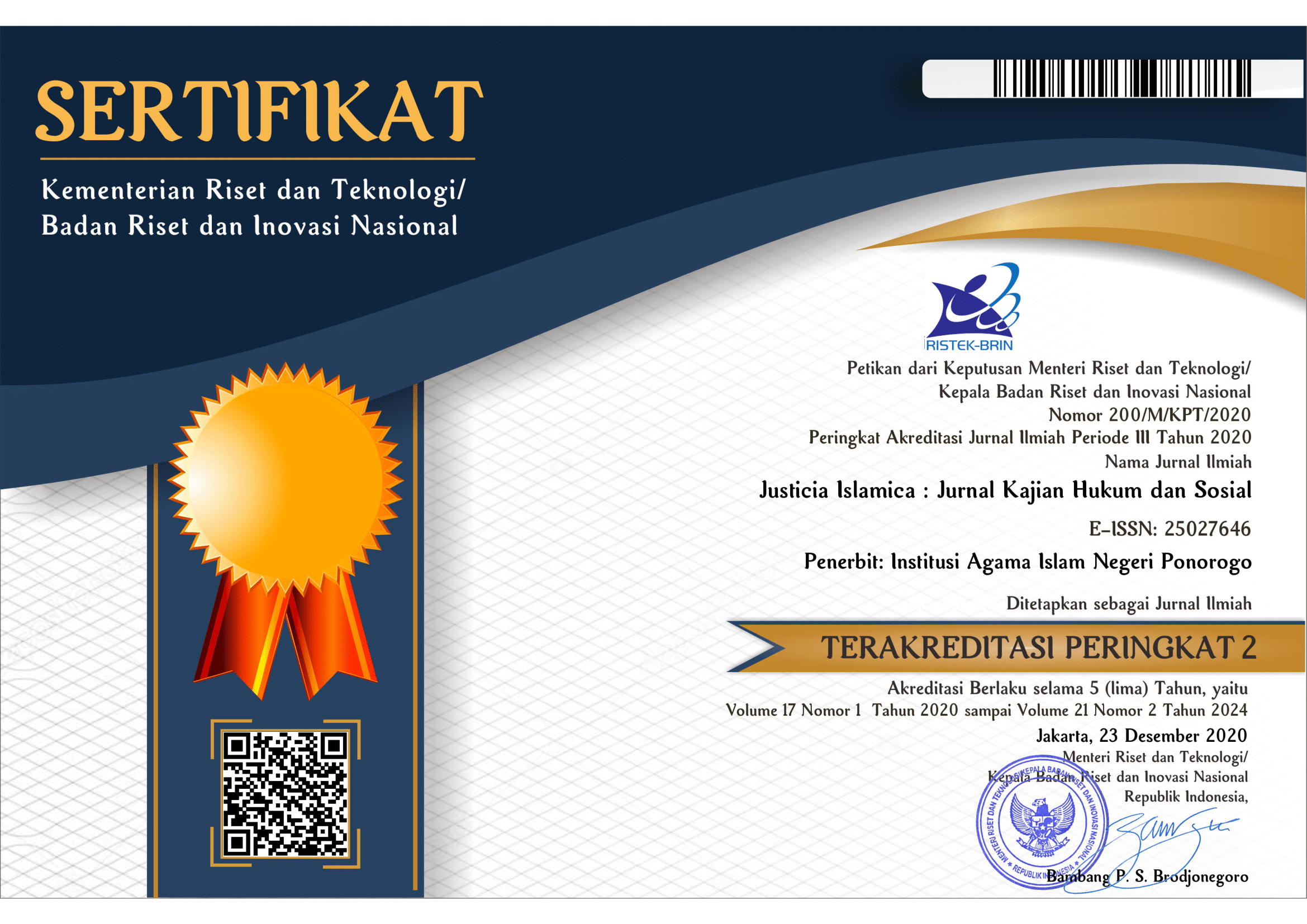Pemahaman tentang Taharah Haid Nifas dan Istihadah: Studi Kasus Ibu-ibu Jama’ah Muslimat Yayasan Masjid Darussalam Tropodo Sidoarjo
DOI:
https://doi.org/10.21154/justicia.v12i1.260Abstract
The discussion of blood in women, namely menstruation, postpartum bleeding and istihaadah, is one that is most often questioned by women. It is also one of the most difficult topics in fiqh, so many people misunderstand it. Even though it has been discussed many times, there are still many Muslim women who do not understand the rules and differences between these three bloods. Perhaps this is because the blood comes out of the same channel, but in every woman, the situation is not always the same, and the rulings and handling are different. Menstruation, postpartum bleeding and istihaadah are a necessity in a woman's life, so women should not be ignorant in this matter. It affects the validity of an act of worship because it is related to purity from hadats and impurity. This study aims to reveal the understanding of the Muslim women of the Darussalam mosque in Tropodo Sidoarjo about the three bloods for women. Namely menstrual blood, postpartum and istihadhah. How the Muslim women already know or not about the theories of fiqh that have to do with the three blood. This research is characterized by a field that takes research samples in the Muslim congregation of the Darussalam Tropodo Sidoarjo mosque foundation. The results show that the understanding of Muslim women Darussalam majority already know about things that have correlation and association with menstruation, nifas and istihadhah.
Downloads
Published
Issue
Section
License
Copyright (c) 2015 Justitia

This work is licensed under a Creative Commons Attribution-ShareAlike 4.0 International License.
Requirements to be met by the author as follows:
- Author storing copyright and grant the journal right of first publication manuscripts simultaneously with licensed under the CC BY-SA allows others to share the work with a statement of the work's authorship and initial publication in this journal.
Authors can enter into the preparation of additional contractual separately for the non-exclusive distribution of a decadent version of the journal issue (e.g., post it to an institutional repository or publish it in a book), with the recognition of initial publication in this journal.
Authors are allowed and encouraged to post their work online (e.g., in institutional repositories or on their website) before and during the submission process because it can lead to productive exchanges and citations earlier and more severe than published works. (see The Effect of Open Access).
This work is licensed under CC BY-SA.


















